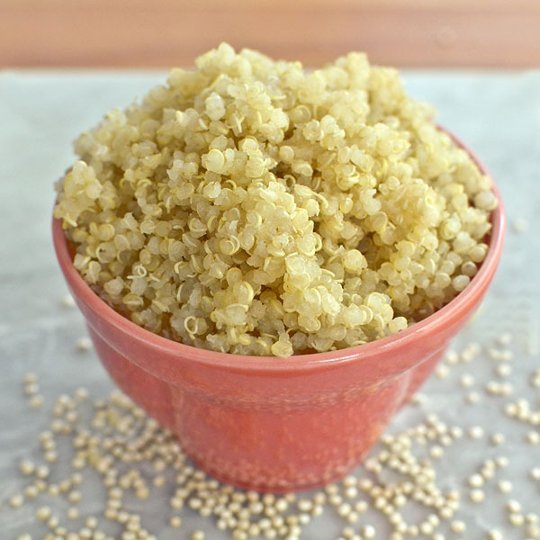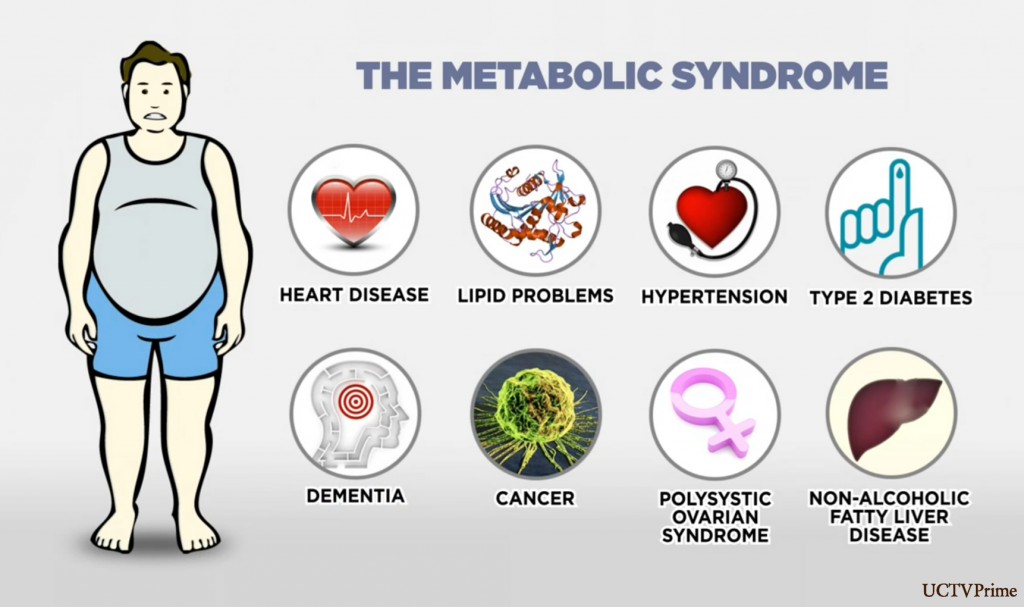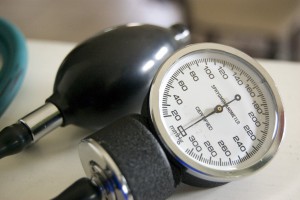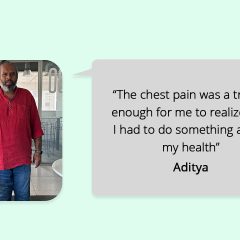
During my college days, I was on the healthier side as compared to all my friends. And, I always felt I had to lose weight just to be like them. The first thing that crossed my mind was I should be skipping my meals. I did precisely that, started to skip my meals and lost weight. But, when is started back on my normal meals I realized I used to gain back the weight. After losing the weight, I also started feeling weak. Since I was into sports I needed to be fit too. I wondered why I am feeling weak. I have lost the extra weight but, yet not feeling energetic?
Slowly and gradually as time passed on, I started my dietetics studies and that’s when I realized the actual meaning of what is weight loss.
When we talk about losing weight, what does it actually mean? Does it mean losing weight or losing muscle weight??
I realized that, there is no shortcut or a magical pill for fat loss. There are several reasons and factors that are responsible for it. When I first lost weight, I started feeling weak because I lost muscle weight and not fat weight.
The key to real fat loss is combining the right foods together and eating right. When the right foods are combined there is a synergy affect resulting in double fat loss in almost half the time.
The way to successfully losing the fat weight is long-term healthy lifestyle change. I think this is a very clever way of informing people to stop trying to find a quick and easy way to lose fat. It just reaffirms that we need to mould ourselves in self created healthy environment and become a healthier individual naturally. Here, are some easy ways to cut down the fat weight rather than of yourself! So lets get started..
1)Healthy Eating Habits- When we talk about healthy eating habits what are the things that come to your mind?
Your major meals of the day which are breakfast, lunch and dinner. These meals are very important and we should not skip these meals. Breakfast is the most important meal of the day. Your body needs to know that it can start burning calories and breakfast is exactly that flag. One should have a king size breakfast. If you do not then you will end up eating unhealthy stuff. Lunch should be lighter than breakfast and well balanced with carbs and proteins. Same with dinner, it should be the lightest of the all meals, with more proteins and less carbohydrates.
Our meals should be load up on protein and fiber. To get rid of that stubborn fat, we need proteins. As proteins helps to repair and build muscles, intake should be up to the requirement. At the same time we should not forget fiber. Fiber helps to digest and lose weight by helping you feel full. So add beans, whole grains, brown rice, nuts, and berries on to the list which are awesome foods to get going.
Not only proteins and fibers but, also the fats are important to include in the daily diet. Not any sort of a no-fat or low-fat diet. Well, a low-fat diet is good but, only if you do it right. You need to stick to the good fats. The good kind (unsaturated; your omega-3s and 6s) can actually lead to fat burn, rising your metabolism.
To reduce calories, to get rid of body fat, you need not to cut out healthy fats completely. Include avocados, fatty fish, olives, nuts and seeds, and oils such as olive, flaxseed and canola in your diet.
2) Eat often- Getting rid of body fat is all about the metabolism, and to keep up the metabolism, you got to be eating constantly.
As we are talking about the major meals same time small frequent meals are important too. When you eat small meals all the time, your metabolic rate increases and the increase in metabolism helps to lose fat. If you eat six meals a day versus just the three regular meals (breakfast , lunch , dinner) with the same total calories, you can lose more fat because more meals burn more calories by increasing thermogenesis, the production of heat, in the body.
Let’s not forget portion control, while going through proper meals you need to have look on portion control as well.
Try to take a less portion when you are serving your plate. Mindful eating works well such as chewing the food thoroughly, eating slowly. Eating slowly helps because it is known that once you cross 20 minutes of eating, the satiety center in the brain gets stimulated which sends you a signal that you are full and you stop eating. This is how portion control helps.
3) Water-The body fuel! Water is the medium in which most cellular activities take place, including the transport and burning of fat. In addition, drinking plenty of calorie-free water makes you feel full. Drink at least 3 litres of water a day. This is going to help you in washing away the toxins from your body and also to lessen the load of liver and thereby helping the liver to focus on metabolizing fat and the metabolizing rate related with fat loss.
Set yourself to accomplish this goal and you are on. Drink loads of water. It’s practically the easiest detoxifying tactic there in.
Two glasses of cold water can actually spike up your metabolism for about half an hour.
4) Exercise with proper breathing- To be on a healthy path you need a proper exercise along with the diet! Try to be more active, Daily 30-45 mins of Interval walking/ Running can be beneficial. Your main focus when you exercise should be losing body fat, and you can’t lose body fat just by burning calories. When we exercise, our bodies start burning calories, but the calories that are burned are the calories from carbohydrates in our system. In order to burn calories from your stored fat, your body requires the presence of oxygen. There is a certain amount of oxygen that your body needs in order to start burning fat and the only way for you to measure the amount needed for your own body is to keep up with your target heart rate during exercise.
Fat burns in the presence of oxygen. There’s a phrase which says (When you eat more, breathe more). It means oxygen burns the extra calories we eat, which is not required by the body and also reduces the overall fat percentage in the body. Oxygen thins the blood a little which helps lower your blood pressure and speed up the flow of blood. This increases your metabolism and burns more calories. The more oxygen you have in your blood the faster your metabolism will be. Cool air causes an additional increase in your metabolic rate because you need to expend more energy to keep the body at a comfortable temperature.
5 ) Rest– as focusing on all activities to stay healthy, along with all that your body needs a crucial ingredient-“rest”!
The culprits are leptin and ghrelin. Leptin tells your body it’s full and ghrelin stimulates appetite. When you don’t sleep, leptin levels decrease and ghrelin levels increases. The result? You eat more unconsciously which can lead to fat gain. To avoid this scenario, make sure you rest. Try to take proper 7-8 hours of sleep. Also your body requires it to reduce stress levels and rejuvenate once again with fresh energy for the next day. You are like a powerhouse that just can’t be stopped, but your body needs to rest. Especially if you’re lifting weights like it’s your job; your muscles need time to repair themselves. And the muscle repairs and recovery happens when your body is at rest. So, take a day to take it easy. You don’t have to sit on the couch all day, but do allow your body to heal itself.
These are some fat burning food- Berries, grape fruit, Green tea, Eggs, Olive oil, Enova oils (Soy or canola) Almonds and other nuts, chilli peppers, whey protein, peanut butter, oat meal, spinach and other green vegetables, whole grains, beans and legumes, lean meat, fatty fish (salmon, tuna, etc), dairy products (low or no fat) etc.
For fat burning exercise you can check the following blog links written by my co-colleagues
https://goqii.com/blog/interval-training-to-put-your-fat-on-flame/

 Plato rightly said, “Excess generally causes reaction and produces a change in the opposite direction, whether it be in seasons, or in individuals, or in governments”.
Plato rightly said, “Excess generally causes reaction and produces a change in the opposite direction, whether it be in seasons, or in individuals, or in governments”. Syndrome X is also known as metabolic syndrome, cardio metabolic syndrome, insulin resistance syndrome, Reaven’s syndrome (named after Gerald Reaven an American endocrinologist and professor at Stanford University who has worked upon insulin resistance and diabetes), and CHAOS (in Australia). It’s one of the leading lifestyle related disorders.
Syndrome X is also known as metabolic syndrome, cardio metabolic syndrome, insulin resistance syndrome, Reaven’s syndrome (named after Gerald Reaven an American endocrinologist and professor at Stanford University who has worked upon insulin resistance and diabetes), and CHAOS (in Australia). It’s one of the leading lifestyle related disorders.





